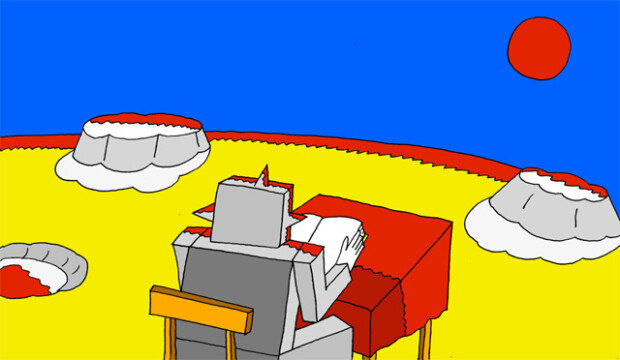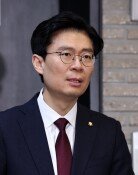Let’s plant apple trees today with tenacity
Let’s plant apple trees today with tenacity
Posted August. 07, 2020 07:45,
Updated August. 07, 2020 07:45


When asked to do experimental testing, students get dubious and say, “Would it make sense?” It takes a great deal of effort and time to put into finding the right answer but it leads you to the answer. Regrettably, even if you start anew, it is highly likely that you give up on it soon.
French author Jules Verne released a novel titled “From the Earth to the Moon” in 1867, describing a wild imaginary story of humans riding a cannonball to the moon. Around 100 years later, in 1969, the Apollo 11 landed on the moon. What is inspiringly amazing is not just about a sci-fi fragment of the novel’s imagination but about how open-minded people were to such an apparently absurd book. It is daring imagination that people need to sustain their life on the Earth. A while ago, it was surprising that the International Thermonuclear Experimental Reactor (ITER), an international nuclear fusion research and engineering megaproject, just came under construction. The mechanism of using nuclear fusion for electric generation in the ITER is the same as how the sun generates solar energy.
The megaproject dates back to 1985 when then-U.S. President Ronald Reagan and then-Soviet Union leader Mikhail Gorbachev agreed on a nuclear non-proliferation agreement. In some sense, it was lucky for South Korea to become an official member state of the ITER project back in 2003. The reactor is expected to be completed in 2025, and a series of testing on nuclear fusion generation will be carried out around 2040. Fifty five-year efforts will lead the project to the final line and come to fruition.
To be specific, all of the ITER project might have begun with the birth of quantum mechanics 100 years ago. Around the early 20th century, physicists started to find that solar energy derived from nuclear fusion. For example, New Zealand–born British physicist Ernest Rutherford discovered the nucleus of an atom in 1911 and British physicist James Chadwick proved neutrons in 1932. The sun up above the sky is a ball-shaped element composing of hydrogen. The burning sun can be explained by the process of how the atomic number 1 hydrogen turns into the atomic number 2 helium. The fusion of hydrogen to form helium leads to the loss of mass, which transforms into light and heat. The physical backgrounds behind nuclear fusion energy were proved by Soviet-American George Gamow.
7.1 grams of hydrogen, the size of one and a half of cube sugar, carry out nuclear fusion to generate a larger amount of energy by 10 times than that produced by oil and coals for a year. The relationship between mass and energy is proved and explained by Albert Einstein’s “E=mc2,” or the theory of relativity. Nuclear fusion is by far the most effective energy generation source throughout human history. As nuclear fusion does not pollute air and pose a safety risk to humans, it differentiates itself from nuclear energy plants.
Every single day is full of unpredictable events. Viral attacks are only growing to threaten humanity. Even if life on the Earth is just like a war, it will go on. All of such adversity makes it more important for us to look into the coming years and head toward better days to come, as if we planted apple trees on the battlefield.







